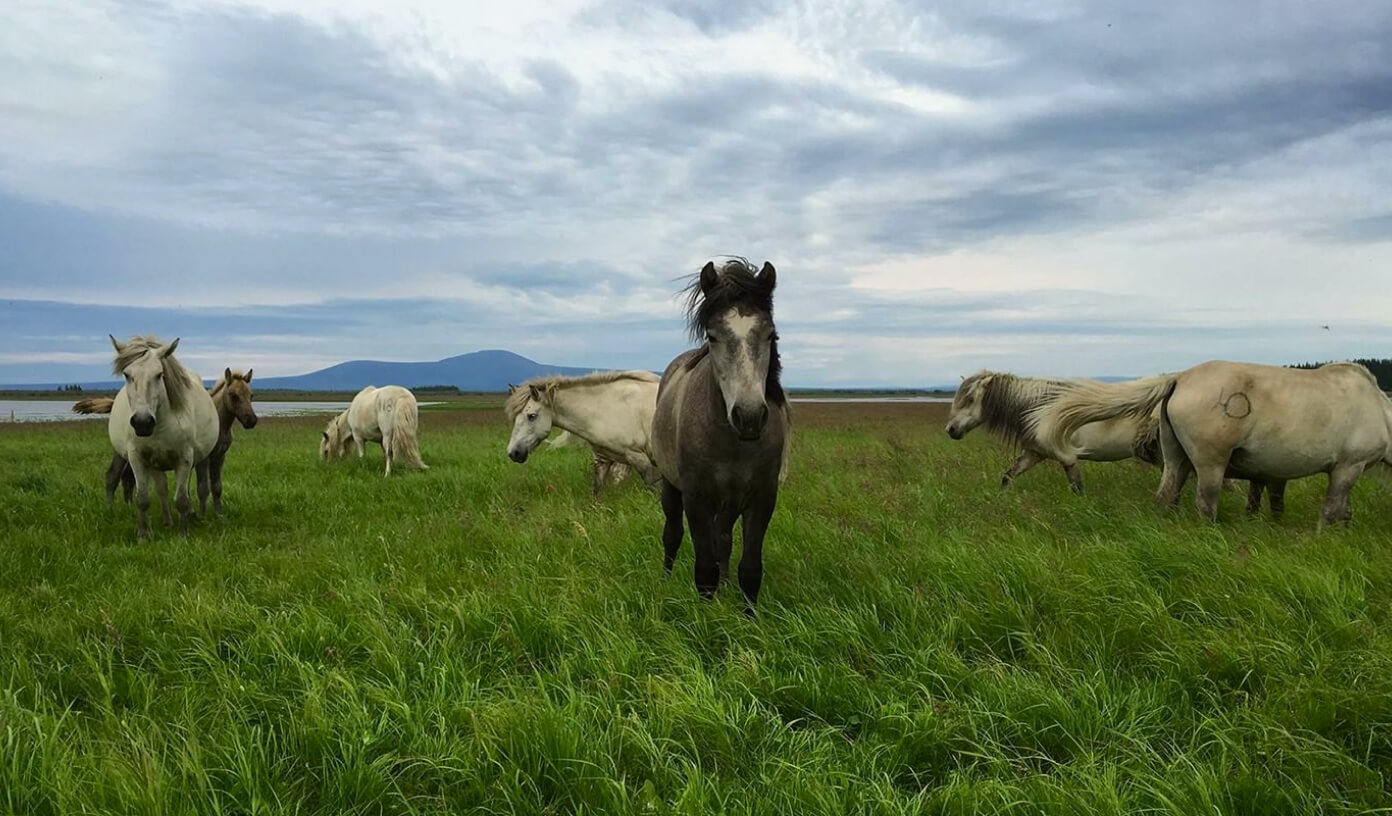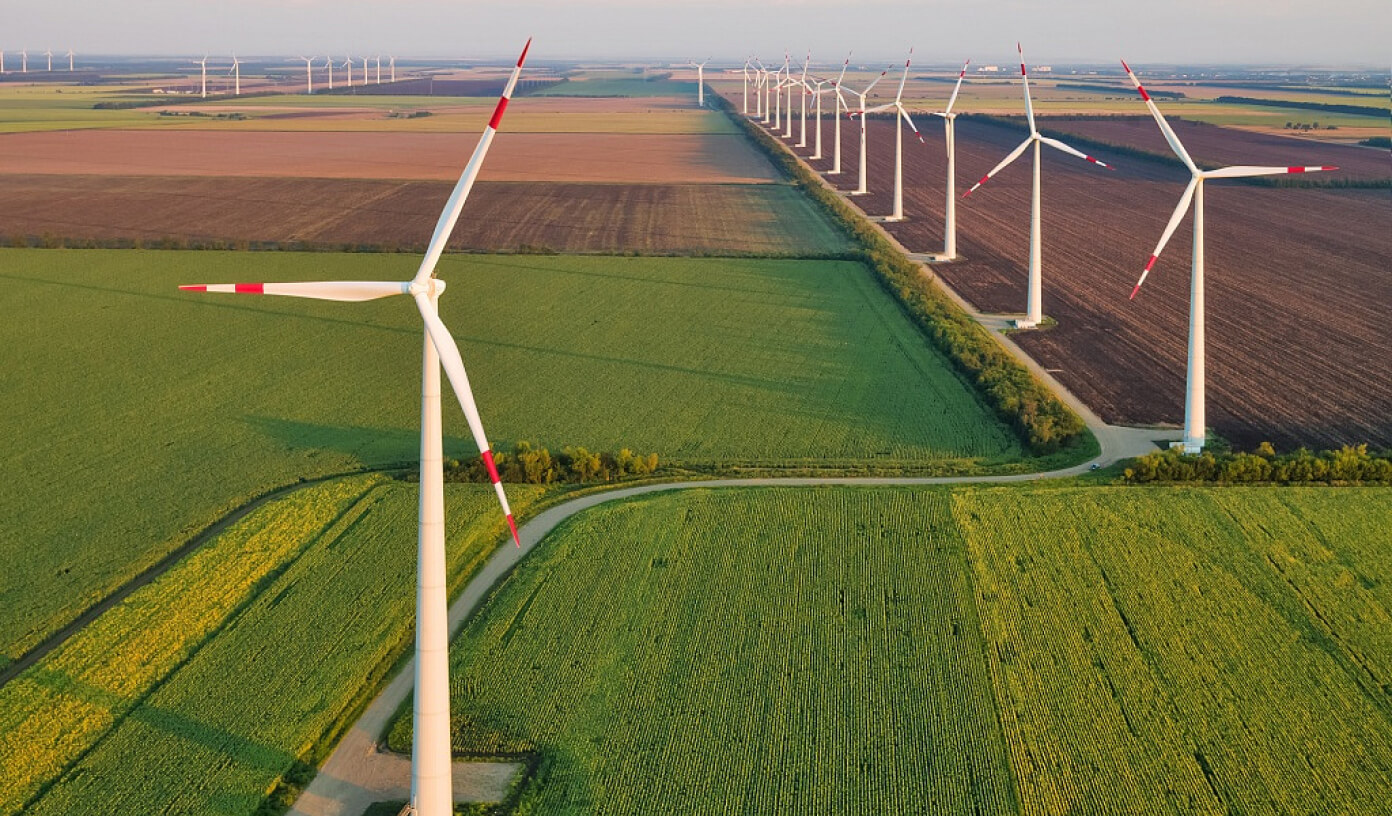In October 2021, Russian President Vladimir Putin set the goal of achieving carbon neutrality of the country (the balance between greenhouse gas emissions and absorption) by 2060. All regions of the country are working towards it, but the strategies of some of them are particularly ambitious.
Sakhalin will become carbon neutral
The first step towards a carbon-neutral future is the ‘climate experiment’ on Sakhalin, which began on 1 September 2022. The island will test a strategy to combat global warming in order to apply it to other parts of the country.
According to the plan, Sakhalin will reach carbon neutrality by 2028. To achieve this, the region will increase the share of energy from renewable sources from 0.5% to 15-28%, mainly thanks to NovaWind (the division of Rosatom), which will build five wind farms on the island. The government also plans to convert more than 37,000 homes into gas, capture and store CO2, sort and recycle waste and develop green transport.
Today, around 300 electric cars drive on Sakhalin’s roads, but the infrastructure is still lagging behind — there are only 75 charging stations. By the end of the experiment, the situation will have improved significantly — the number of electric charging stations will increase to 1,000. And you can buy a “green” car now, especially since January 1, 2022, their owners will not be charged transport tax.
 Photo by: RiverNorthPhotography / iStock
Photo by: RiverNorthPhotography / iStock
A prototype of the Russian carbon market will also be launched on Sakhalin. Enterprises will be able to trade not only unused emission allowance balances (documents that allow the formation of a certain amount of greenhouse gases), but also carbon units obtained through the successful implementation of eco-projects that have reduced the concentration of CO2 in the atmosphere. According to the Ministry of Environment, the first transaction with carbon units will take place in 2022, the credits will start to be issued in 2024, and fines for exceeding them will be issued in 2025.
There are two global approaches to achieving carbon neutrality. One is to ensure that technologies that leave a large carbon footprint are replaced with technologies that do not. This strategy is often referred to as “zero-emissions”. The second is to deploy technologies that reduce emissions, but do not reduce them to zero. The first approach is a balancing act: making sure that the total amount of emissions is reduced. When we read about the plans of Western countries or municipalities to achieve carbon neutrality, we automatically assume a zero-emission strategy, but it is really about reducing emissions and striking a favourable balance and reducing the total amount of greenhouse gas emissions.
The Russian plans, in particular the regional strategies, are more transparent and honest. A one-step transition to zero-emission technologies is unrealistic, especially given our country’s climate. For example, residents in most regions of our country cannot afford not to have a single heating system. Another thing is that the current utility system, designed with the priority of reliability, should receive a different, but no less important priority: to reduce emissions without loss of reliability. This is achieved through the introduction of modern technology. In particular, the mass transition of utilities to gas, energy saving where possible, and the gradual introduction of renewable energy sources. New solutions and approaches to this issue are expected from Russian science. It is also a priority to ensure reduction of emissions in industry without reducing the rate of production. The introduction of the best available technologies will also help to achieve this goal.
Pleistocene park will slow the melting of Arctic ice
The Arctic is warming faster than other regions of the planet, according to a report by an international team of scientists published in Science Advances, a scientific journal of the American Association for the Advancement of Science. The rapid melting of permafrost is capable of causing extreme weather conditions in the northern hemisphere, killing animals, destroying underground infrastructure, worsening living conditions for populations and other catastrophic consequences. It will take time to switch the Arctic to green energy, so it was decided to go the extra mile by launching a project to rehabilitate the Arctic tundra ecosystem. Now some parts of it are almost dead — scarce vegetation and mosquitoes.
In 1996, the Russian ecologist Sergey Afanasyevich Zimov founded the Pleistocene Park project. It was not named so by chance: it was in the Pleistocene epoch, 40-30 thousand years ago, on the banks of the Kolyma River (one of the largest rivers in Eastern Siberia) that thick grass grew green and millions of animals grazed. According to Nikita Zimov, the project director and son of Sergei Afanasyevich, the revival of this ecosystem will slow the thawing of the permafrost. In winter, large herbivores compact the layer of snow, increasing the depth of soil freezing, while in summer they accelerate grass growth, fertilising the ground and spreading seeds.
 Photo by: Pleistocene Park social media
Photo by: Pleistocene Park social media
The project was then halted, but nowadays its promise in the fight against climate change has become apparent. The park is home to Kalmykian cows, reindeer, Yakutian horses, bison, yaks, sheep, goats, Mongolian camels, bison and a large colony of swallows. The animals are kept in a 2 thousand hectare enclosure to make it easier to track their impact on the ecosystem. There are already positive changes — grasses and cereals have started to grow actively and the ability of the soil to absorb carbon has increased.
According to calculations by Nikita Zimov, once the ecosystem is restored, each square metre of northern soil will be able to absorb 10-16 kilograms of carbon. This means that the Pleistocene Park will not only offset the carbon footprint of all regions of Russia, but will also allow for the sale of quotas on the world market.
Murmansk will produce green hydrogen
In 2022, the Kola Wind Farm, the world’s largest wind farm located above the Arctic Circle, will be commissioned in Murmansk. And from 2024, it will be used to produce environmentally friendly hydrogen. In addition to supplying energy from renewable sources, all that is needed is water and an electrolyzer — a device that separates liquid components from it. Four companies — H2 LLC, Rusnano, Enel, and Rosatom — will be involved in the production. According to the project documentation, the annual hydrogen production will reach 12,000 tons in 2025.
 Photo by: NovaWind
Photo by: NovaWind
Murmansk Governor Andrei Chibis noted that the region has a non-freezing port that would allow the export of surplus hydrogen. This type of alternative fuel can be used to fuel eco-vehicles and in industry to reduce the carbon footprint of Russian products.
In addition, Murmansk has established an experimental system for managing solid municipal waste, one of the main sources of greenhouse gases. Already now, more than 80% of MSW in the region is sorted, 33% is recycled, and 67% is sent for burial. The landfill, where waste not recycled is brought, is equipped with a drainage system which prevents waste from coming into contact with the natural environment.
Today, around 300 electric cars drive on Sakhalin’s roads, but the infrastructure is still lagging behind — there are only 75 charging stations. By the end of the experiment, the situation will have improved significantly — the number of electric charging stations will increase to 1,000. And you can buy a “green” car now, especially since January 1, 2022, their owners will not be charged transport tax.
Author: Vera Zhikhareva
Cover photo: NovaWind








Comments